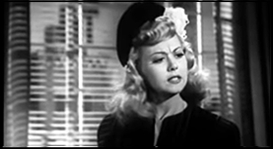Wed 29 Jan 2020
A British TV Comedy Review: BLANDINGS “Pig-hoo-o-o-o-ey”
Posted by Steve under Reviews , TV Comedy[16] Comments
BLANDINGS. “Pig-hoo-o-o-o-ey.” BBC One, 30 minutes, 13 January 2013. (Season 1, Episode 1.) Timothy Spall (Clarence Threepwood, 9th Earl of Emsworth), Jennifer Saunders (Lady Constance Keeble), Jack Farthing (The Hon. Frederick Threepwood), Mark Williams (Sebastian Beach). Guest Cast: Alice Orr-Ewing, Brendan Patricks, James Norton. Screenplay by Guy Andrews, based on the story of the same title by P. G. Wodehouse, which first appeared in the US in the 09 July 1927 issue of Liberty, and in the United Kingdom in the August 1927 Strand.; included the collection Blandings Castle and Elsewhere (1935) Director: Paul Seed.
Even in the short running time of only 30 minutes there are two subplots pulled off to perfection in this, the opening episode of a two season run of this recent British TV series. In print, Blandings Castle was the setting for eleven novels and nine short stories. Although in my younger years I was an avid reader of P. G. Wodehouse, I don’t remember specifics of many of them. Jeeves, yes, but Blandings, no.
So I came to the TV version with the equivalent of a blank slate, with neither preconceptions to be dashed, nor with hopes to be wished for, but oh so seldom confirmed. Let me state from the start, though, so as to not keep you in any kind of doubt, that I enjoyed this one immensely.
In this opening salvo the most appropriately potty Lord Emsworth has two problems on his hands. First, his prize pig Empress of Blandings, has stopping eating. By no coincidence, Emsworth’s pigman, Wellbeloved, is confined for the next two weeks in prison. And this just before the 87th annual Shropshire Agricultural Show.
This small problem may be solvable, when Jimmy Belford, fresh from the American West and Emsworth’s niece’s choice of wedding material, against Emsworth’s sister Constance’s express wishes, demonstrates an universal pig call that will save the day.
Complicated? Yes. Funny? Another definite yes. And beautifully photographed as well, filmed on location at Crom Castle in Northern Ireland. I made it through only two episodes of Downton Abbey, at which point I decided that this oh-so elegant soap opera (but still soap opera) was not for me. With my sense of humor obviously showing, my antidote of choice, as I’ve just discovered, is Blandings, and by a huge margin. The thirty minutes simply flew by.
